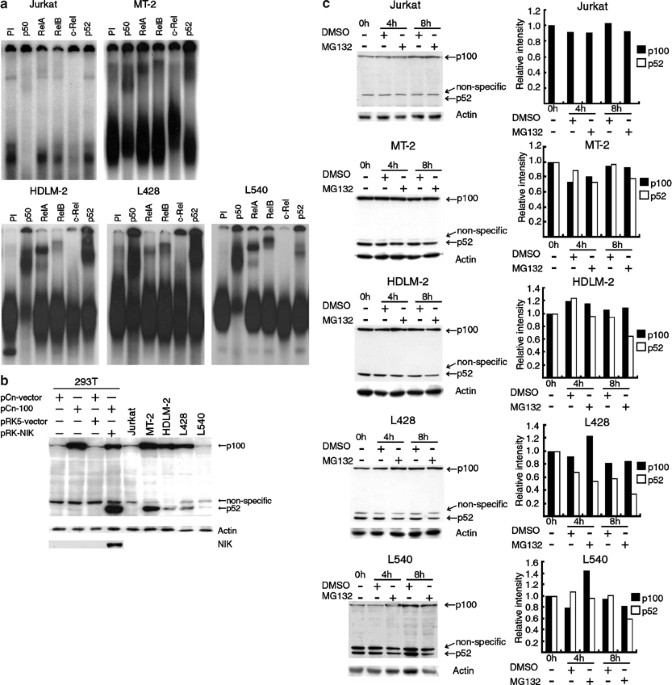
- Select a language for the TTS:
- UK English Female
- UK English Male
- US English Female
- US English Male
- Australian Female
- Australian Male
- Language selected: (auto detect) - EN
Play all audios:
ABSTRACT Comprehensive identification of polymorphisms among individuals within a species is essential both for studying the genetic basis of phenotypic differences and for elucidating the
evolutionary history of the species. Large-scale polymorphism surveys have recently been reported for human1, mouse2 and _Arabidopsis thaliana_3. Here we report a nucleotide-level survey of
genomic variation in a diverse collection of 63 _Saccharomyces cerevisiae_ strains sampled from different ecological niches (beer, bread, vineyards, immunocompromised individuals, various
fermentations and nature) and from locations on different continents. We hybridized genomic DNA from each strain to whole-genome tiling microarrays and detected 1.89 million single
nucleotide polymorphisms, which were grouped into 101,343 distinct segregating sites. We also identified 3,985 deletion events of length >200 base pairs among the surveyed strains. We
analysed the genome-wide patterns of nucleotide polymorphism and deletion variants, and measured the extent of linkage disequilibrium in _S. cerevisiae_. These results and the polymorphism
resource we have generated lay the foundation for genome-wide association studies in yeast. We also examined the population structure of _S. cerevisiae_, providing support for multiple
domestication events as well as insight into the origins of pathogenic strains. Access through your institution Buy or subscribe This is a preview of subscription content, access via your
institution ACCESS OPTIONS Access through your institution Subscribe to this journal Receive 51 print issues and online access $199.00 per year only $3.90 per issue Learn more Buy this
article * Purchase on SpringerLink * Instant access to full article PDF Buy now Prices may be subject to local taxes which are calculated during checkout ADDITIONAL ACCESS OPTIONS: * Log in
* Learn about institutional subscriptions * Read our FAQs * Contact customer support SIMILAR CONTENT BEING VIEWED BY OTHERS TELOMERE-TO-TELOMERE ASSEMBLIES OF 142 STRAINS CHARACTERIZE THE
GENOME STRUCTURAL LANDSCAPE IN _SACCHAROMYCES CEREVISIAE_ Article Open access 31 July 2023 ANCIENT AND RECENT ORIGINS OF SHARED POLYMORPHISMS IN YEAST Article 12 March 2024 MACROEVOLUTIONARY
DIVERSITY OF TRAITS AND GENOMES IN THE MODEL YEAST GENUS _SACCHAROMYCES_ Article Open access 08 February 2023 REFERENCES * The International HapMap Consortium. A haplotype map of the human
genome. _Nature_ 437, 1299–1320 (2005) * Frazer, K. A. et al. A sequence-based variation map of 8.27 million SNPs in inbred mouse strains. _Nature_ 448, 1050–1053 (2007) Article ADS CAS
Google Scholar * Clark, R. M. et al. Common sequence polymorphisms shaping genetic diversity in _Arabidopsis_ _thaliana_. _Science_ 317, 338–342 (2007) Article ADS CAS Google Scholar *
Kellis, M., Patterson, N., Endrizzi, M., Birren, B. & Lander, E. S. Sequencing and comparison of yeast species to identify genes and regulatory elements. _Nature_ 423, 241–254 (2003)
Article ADS CAS Google Scholar * Cliften, P. et al. Finding functional features in _Saccharomyces_ genomes by phylogenetic footprinting. _Science_ 301, 71–76 (2003) Article ADS CAS
Google Scholar * Dujon, B. et al. Genome evolution in yeasts. _Nature_ 430, 35–44 (2004) Article ADS Google Scholar * Dujon, B. Yeasts illustrate the molecular mechanisms of eukaryotic
genome evolution. _Trends Genet._ 22, 375–387 (2006) Article CAS Google Scholar * Gresham, D. et al. Genome-wide detection of polymorphisms at nucleotide resolution with a single DNA
microarray. _Science_ 311, 1932–1936 (2006) Article ADS CAS Google Scholar * Carter, D. M. et al. Population genomics of domestic and wild yeasts. _Nature_ (submitted) * Gerton, J. L. et
al. Inaugural article: global mapping of meiotic recombination hotspots and coldspots in the yeast _Saccharomyces cerevisiae_. _Proc. Natl Acad. Sci. USA_ 97, 11383–11390 (2000) Article
ADS CAS Google Scholar * Pryde, F. E., Gorham, H. C. & Louis, E. J. Chromosome ends: all the same under their caps. _Curr. Opin. Genet. Dev._ 7, 822–828 (1997) Article CAS Google
Scholar * Schacherer, J. et al. Genome-wide analysis of nucleotide-level variation in commonly used _Saccharomyces cerevisiae_ strains. _PLoS ONE_ 2, e322 (2007) Article ADS Google
Scholar * Winzeler, E. A. et al. Genetic diversity in yeast assessed with whole-genome oligonucleotide arrays. _Genetics_ 163, 79–89 (2003) CAS PubMed PubMed Central Google Scholar *
Winzeler, E. A. et al. Functional characterization of the _S. _ _cerevisiae_ genome by gene deletion and parallel analysis. _Science_ 285, 901–906 (1999) Article CAS Google Scholar *
Pritchard, J. K., Stephens, M. & Donnelly, P. Inference of population structure using multilocus genotype data. _Genetics_ 155, 945–959 (2000) CAS PubMed PubMed Central Google Scholar
* Fay, J. C. & Benavides, J. A. Evidence for domesticated and wild populations of _Saccharomyces cerevisiae_. _PLoS Genet._ 1, 66–71 (2005) Article CAS Google Scholar * Mortimer, R.
K. & Johnston, J. R. Genealogy of principal strains of the yeast genetic stock center. _Genetics_ 113, 35–43 (1986) CAS PubMed PubMed Central Google Scholar * Enache-Angoulvant, A.
& Hennequin, C. Invasive _Saccharomyces_ infection: a comprehensive review. _Clin. Infect. Dis._ 41, 1559–1568 (2005) Article Google Scholar * de Llanos, R., Querol, A., Peman, J.,
Gobernado, M. & Fernandez-Espinar, M. T. Food and probiotic strains from the _Saccharomyces cerevisiae_ species as a possible origin of human systemic infections. _Int. J. Food
Microbiol._ 110, 286–290 (2006) Article CAS Google Scholar * Steinmetz, L. M. et al. Dissecting the architecture of a quantitative trait locus in yeast. _Nature_ 416, 326–330 (2002)
Article ADS CAS Google Scholar * Deutschbauer, A. M. & Davis, R. W. Quantitative trait loci mapped to single-nucleotide resolution in yeast. _Nature Genet._ 37, 1333–1340 (2005)
Article CAS Google Scholar * Gatbonton, T. et al. Telomere length as a quantitative trait: genome-wide survey and genetic mapping of telomere length-control genes in yeast. _PLoS Genet._
2, e35 (2006) Article Google Scholar * Brem, R. B., Yvert, G., Clinton, R. & Kruglyak, L. Genetic dissection of transcriptional regulation in budding yeast. _Science_ 296, 752–755
(2002) Article ADS CAS Google Scholar * Perlstein, E. O., Ruderfer, D. M., Roberts, D. C., Schreiber, S. L. & Kruglyak, L. Genetic basis of individual differences in the response to
small-molecule drugs in yeast. _Nature Genet._ 39, 496–502 (2007) Article CAS Google Scholar * Huson, D. H. & Bryant, D. Application of phylogenetic networks in evolutionary studies.
_Mol. Biol. Evol._ 23, 254–267 (2006) Article CAS Google Scholar * Thornton, K. Libsequence: a C++ class library for evolutionary genetic analysis. _Bioinformatics_ 19, 2325–2327 (2003)
Article CAS Google Scholar * Marjoram, P. & Wall, J. D. Fast “coalescent” simulation. _BMC Genet._ 7, 16 (2006) Article Google Scholar * Fu, Y. X. Estimating effective population
size or mutation rate using the frequencies of mutations of various classes in a sample of DNA sequences. _Genetics_ 138, 1375–1386 (1994) CAS PubMed PubMed Central Google Scholar *
Tajima, F. Evolutionary relationship of DNA sequences in finite populations. _Genetics_ 105, 437–460 (1983) CAS PubMed PubMed Central Google Scholar * Yang, Z. PAML: a program package
for phylogenetic analysis by maximum likelihood. _Comput. Appl. Biosci._ 13, 555–556 (1997) CAS PubMed Google Scholar Download references ACKNOWLEDGEMENTS We are grateful to all the
researchers and institutions, and especially J. Fay, for sharing yeast strains. We thank K. Dolinski and J. Matese for technical support and D. Gresham for comments on the manuscript. The
authors acknowledge discussions with members of the Kruglyak and Botstein laboratories. This work was supported by NIH grant R37 MH059520 and a James S. McDonnell Foundation Centennial
Fellowship to L.K., and NIH grant GM071508 to the Lewis-Sigler Institute. AUTHOR INFORMATION Author notes * Joseph Schacherer Present address: Present address: Department of Molecular
Genetics, Genomics and Microbiology, Louis-Pasteur University and CNRS, UMR7156, Strasbourg 67083, France., * Joseph Schacherer and Joshua A. Shapiro: These authors contributed equally to
this work. AUTHORS AND AFFILIATIONS * Department of Ecology and Evolutionary Biology and Howard Hughes Medical Institute, Lewis-Sigler Institute for Integrative Genomics, Princeton
University, Princeton, New Jersey 08544, USA, Joseph Schacherer, Joshua A. Shapiro, Douglas M. Ruderfer & Leonid Kruglyak Authors * Joseph Schacherer View author publications You can
also search for this author inPubMed Google Scholar * Joshua A. Shapiro View author publications You can also search for this author inPubMed Google Scholar * Douglas M. Ruderfer View author
publications You can also search for this author inPubMed Google Scholar * Leonid Kruglyak View author publications You can also search for this author inPubMed Google Scholar CORRESPONDING
AUTHOR Correspondence to Leonid Kruglyak. SUPPLEMENTARY INFORMATION SUPPLEMENTARY INFORMATION This file contains Supplementary Figures S1- S9 and Supplementary Tables 1 and 4 (PDF 2229 kb)
TABLE 2 This file contains Supplementary Table 2 (XLS 376 kb) TABLE 3 This file contains Supplementary Table 3 (XLS 70 kb) POWERPOINT SLIDES POWERPOINT SLIDE FOR FIG. 1 POWERPOINT SLIDE FOR
FIG. 2 POWERPOINT SLIDE FOR FIG. 3 RIGHTS AND PERMISSIONS Reprints and permissions ABOUT THIS ARTICLE CITE THIS ARTICLE Schacherer, J., Shapiro, J., Ruderfer, D. _et al._ Comprehensive
polymorphism survey elucidates population structure of _Saccharomyces cerevisiae_. _Nature_ 458, 342–345 (2009). https://doi.org/10.1038/nature07670 Download citation * Received: 18 June
2008 * Accepted: 25 November 2008 * Published: 11 February 2009 * Issue Date: 19 March 2009 * DOI: https://doi.org/10.1038/nature07670 SHARE THIS ARTICLE Anyone you share the following link
with will be able to read this content: Get shareable link Sorry, a shareable link is not currently available for this article. Copy to clipboard Provided by the Springer Nature SharedIt
content-sharing initiative






![[withdrawn] medical reports: foundation cases](https://www.gov.uk/assets/static/govuk-opengraph-image-03837e1cec82f217cf32514635a13c879b8c400ae3b1c207c5744411658c7635.png)
